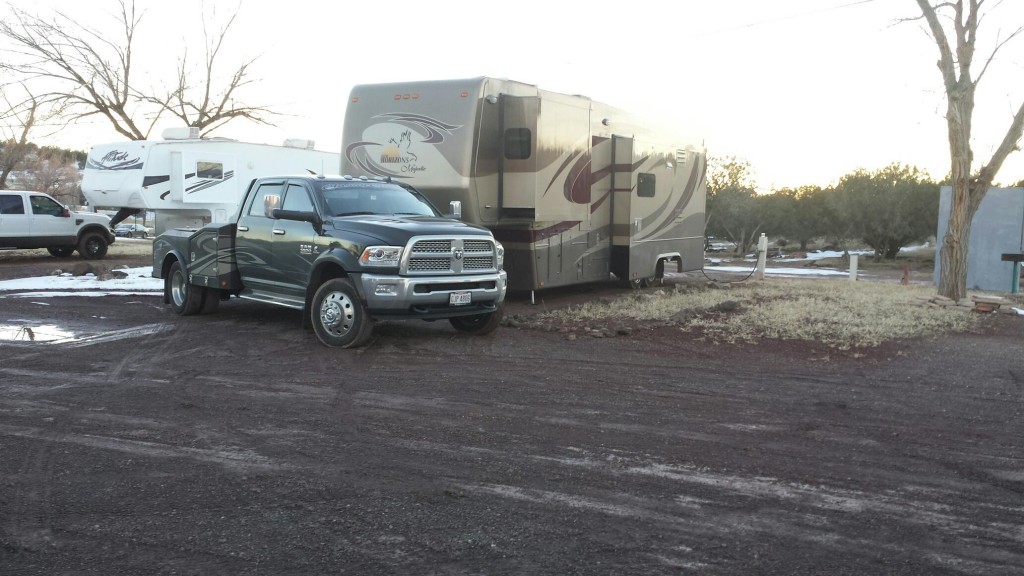A few days ago Tom and I were driving through Arizona. We wanted to spend the night in Williams, “The Gateway to the Grand Canyon,” but rangers were doing a controlled burn on the mountain and the RV park where we were going to stay was full of smoke. As much as we like campfires, we didn’t want the whole RV to smell like smoke for days to come, so we went on.
We traveled to the next town over, which had a small RV park that used to be a KOA, so we figured it would be a fine place to stay. It was in Ash Fork, Arizona. The entire area – Ash Fork, Williams, and Flagstaff – had just had a near-record snowfall of 12″. But the several days before we came, the temperatures were back up in the 40’s and 50’s with brilliant, sunny skies so the snow was melting quickly. The campground in Ash Fork was muddy. It wasn’t their fault – the people running it were very friendly and they were trying to make it a nice place to stay – but the mud and the melting snow and the run-down atmosphere of the town made us a little wary.

Once we had the RV set up, we took a walk around the town, thinking we could find a place to eat supper. We walked from one end of the town to the other and it looked like a ghost town. The only businesses in town were three places that sold flagstone in bulk. Ash Fork has the nickname “The Flagstone Capital of the the World” and it looks like it would be a great place to buy flagstone. Even so, the town looked rundown with more than 1/3 of the homes deserted and the other 2/3 in need of serious care.
Ash Fork was once a hub for the Sante Fe Railroad and had a Harvey Hotel called “The Escalante.” The town reached its apex when Route 66 was built and came right through downtown. Since then, however, the Sante Fe Railroad moved 10 miles north and I-40 bypassed the town and destroyed the businesses that depended on Route 66 traffic.
Another thing that has hurt Ash Fork is the lack of water. The town didn’t have it’s own water source until 1977. Before that, water was hauled in by the railroad. When the train moved in 1960, they still provided water to Ash Fork until 1977 when a huge fire burned up most of downtown Ash Fork. Then the people in town got together and dug a well that provides water at several pumping stations in town. People do not have piped water into their homes, so most of the families have a pick-up truck with a water tank on the back for hauling their water to their homes. Another fire in 1987 destroyed the few businesses that were left “downtown”.
Nothing looks good when it is covered by melting snow, but Ash Fork looked particularly sad. Fewer than 500 people currently live in the town. Most of them are employed by the flagstone quarries. The campground had been recently bought by a young couple with small children who were trying to make a go of it. They also had the town’s laundromat, U-Haul concession, and sold propane.
When you look at Ash Fork, and the difficult life of the town, it is easy to see how a ghost town is formed. The families living there are still hanging on, but you have to wonder how long they will be able to do so.
